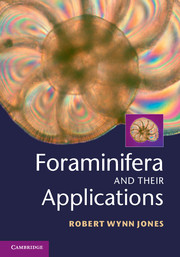Book contents
- Frontmatter
- Dedication
- Contents
- Preface
- Acknowledgements
- 1 Past, present and future foraminiferal research
- 2 Research methods
- 3 Biology, morphology and classification
- 4 Ecology
- 5 Palaeobiology, palaeoecology (or palaeoenvironmental interpretation)
- 6 Palaeobiological or evolutionary history of the Foraminifera
- 7 Biostratigraphy
- 8 Sequence stratigraphy
- 9 Applications and case studies in petroleum geology
- 10 Applications and case studies in mineral geology
- 11 Applications and case studies in engineering geology
- 12 Applications and case studies in environmental science
- 13 Applications and case studies in archaeology
- References
- Index
1 - Past, present and future foraminiferal research
Published online by Cambridge University Press: 05 December 2013
- Frontmatter
- Dedication
- Contents
- Preface
- Acknowledgements
- 1 Past, present and future foraminiferal research
- 2 Research methods
- 3 Biology, morphology and classification
- 4 Ecology
- 5 Palaeobiology, palaeoecology (or palaeoenvironmental interpretation)
- 6 Palaeobiological or evolutionary history of the Foraminifera
- 7 Biostratigraphy
- 8 Sequence stratigraphy
- 9 Applications and case studies in petroleum geology
- 10 Applications and case studies in mineral geology
- 11 Applications and case studies in engineering geology
- 12 Applications and case studies in environmental science
- 13 Applications and case studies in archaeology
- References
- Index
Summary
This chapter deals with past, present and future foraminiferal research.
Past research (retrospective)
Although they are classed as microfossils, at least certain Foraminifera, the so-called larger benthic Foraminifera, or LBFs, are large enough to be visible to the naked eye. The group has therefore been known to Humankind since early antiquity. The first written reference to Foraminifera is by Strabo, who wrote, of his observations of what we now know to be the LBF Nummulites gizehensis: ‘There are heaps of stone chips lying in front of the pyramids and among them are found chips that are like lentils both in form and size . . . They say that what was left of the food of the workmen has petrified and this is not improbable’.
There may be said to have been two, partially overlapping, phases of past research on the Foraminifera, namely, the descriptive and the interpretive. The emphasis shifted between the two phases, from pure to applied research.
The descriptive phase began with the first formal descriptions of species of Foraminifera dating back to the late eighteenth to nineteenth centuries. Those undertaken by the so-called ‘Continental School’, personified by the great French naturalist Alcide Dessalines d’Orbigny, embodied a narrower, or ‘splitting’, species concept than would be widely accepted today, albeit possibly a more accurate one (le Calvez, in Hedley & Adams, 1974); while those undertaken by the ‘English School’, personified by Henry Bowman Brady, embodied a wider, or ‘lumping’ concept (Jones, 1990, 1994; Jones, in Lightman, 2004; Jones, in Matthew, 2004; Jones, 2007; Jones, in Bowden et al., in press; see also Box 1 below).
- Type
- Chapter
- Information
- Foraminifera and their Applications , pp. 1 - 7Publisher: Cambridge University PressPrint publication year: 2013

